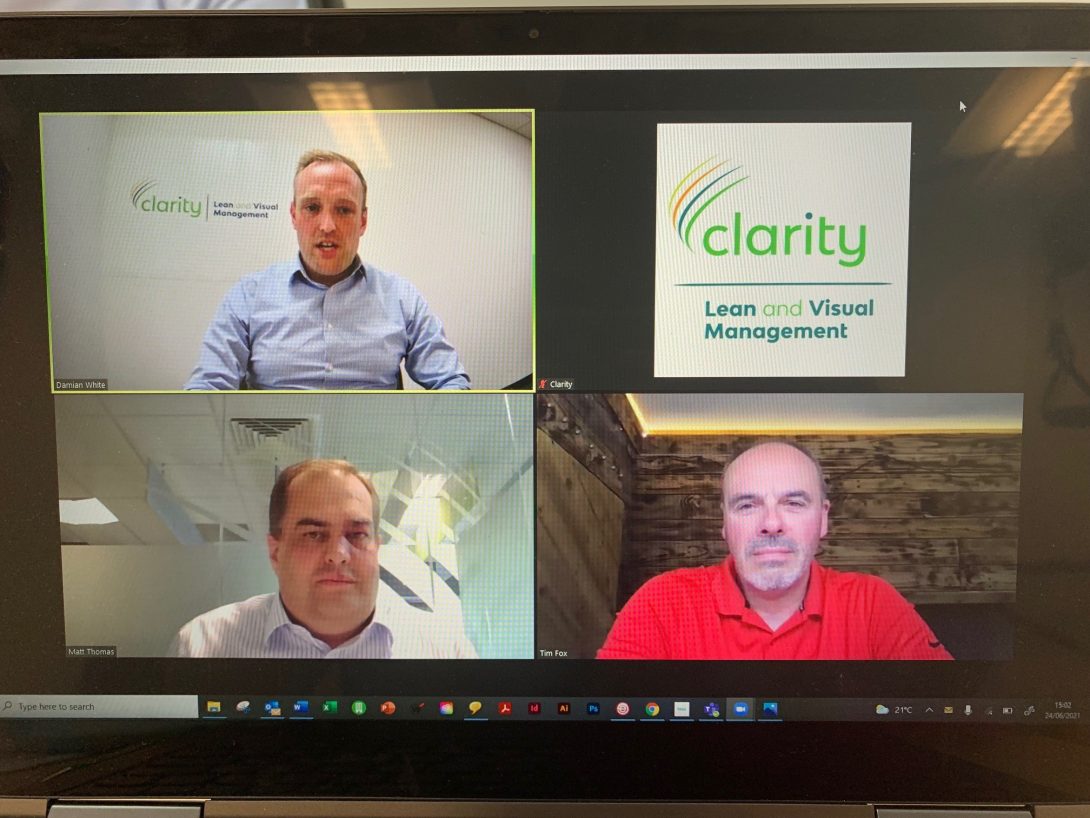Why Lean Can Fail: Your Questions Answered
 By
Rich Sutherland
·
3 minute read
By
Rich Sutherland
·
3 minute read
We recently held a webinar called Why Lean Can Fail, which focused on how to ensure that it is a success within your workplace. Clarity’s own Damian White (Managing Director) and Matt Thomas (Principal Consultant) were joined by our good friend Tim Fox, a highly experienced Improvement Facilitator.
We were delighted to have so many people join us for an afternoon of exploring Lean and how it can transform a business for the better. Below are the answers to your questions, which will give you a foundation for beginning your Lean journey with confidence.

How do we take away the negativity towards Lean?
Tim: It sometimes feels like Groundhog Day for me, as I hear the same thing when visiting the premises of new clients. People say that they tried 5S and it didn’t work, they tried Lean and it didn’t work, with the conclusion being that they shouldn’t bother with Lean anymore.
Lean’s actually been around for centuries and has been proven to work in many different working environments and industry types. Any connotations are connected to the name rather than the process, with many businesses having never been given the guidance they require. Getting from A to B will never be a straight line, but the journey is worthwhile because Lean improves service delivery, stock turns, waste reduction and much more.
Matt: We have powerful case studies that will show how Lean works. They key is to make sure there’s a celebration of any success. Keep doing that and any negativity will quickly disappear.
When you celebrate wins, no matter how small, daily frustration will disappear and positivity will take its place. If a previous programme you implemented was wrongly called Lean, it’s time to remove what was left behind and start afresh with a correctly implemented Lean strategy.
Where and how do I start with Lean?
Matt: Create that burning platform and start the fire! Make sure there is a real need throughout the whole organisation and that everyone understands why you’re embedding a Lean methodology. Start with communication and the rest will follow.
Tim: Get people involved through a simple simulation that shows everyone what Lean’s all about and how it will translate to their departments. Introduce the core terminology and carry out a hunt for TIM WOODS, the enemy of Lean.
When we start to see what the issues are, it helps to create that burning platform. Understand that you’re doing it for a good reason and it will yield tremendous value. I’ve worked with businesses that have doubled output by recognising the impediment to flow, removing bottlenecks and enabling positive change to happen. It might be as localised as getting a single machine that’s critical to the process operating at optimal efficiency.
Damian: Absolutely! Start simple, get back to basics, and have a session around a whiteboard with colleagues from every department. You may be surprised by the energy that flows.
How can something made to help manufacturing cars help a project-driven business?
Tim: The whole purpose of the study of Toyota was to discover why they were so markedly different from the rest of the industry. This can be applied to a huge range of manufacturers and other sectors, such as healthcare and the service industries.
There are common processes across all types of businesses, so Lean helps you to streamline processes and ensure effective use of resources. Some of the greatest successes I’ve had are with project-led companies.
Matt: Wherever there’s a process, Lean has a place. By understanding Lean principles and applying them properly, it will benefit the process and in turn the wider business.
How do we measure benefits from a shadow board or offline Kanban system?
Tim: I’m a huge fan of shadow boards. One client told me that every time he passes one, he quickly checks that all of the tools are there. As for Kanban and stock areas, you can see whether you’ve been successful in always supplying what needs to be supplied. It’s a very rich metric, as you can instantly recognise that you’re delivering a high level of service, which needs to be celebrated.
Matt: It can be really simple visual stuff that tells you whether or not a department is working efficiently. For instance, a store area may not be data-rich but your people can explain why the department is performing well. The simple question of whether you’re winning or losing allows you to measure success and make positive changes.
Lean is always at its strongest when relatively small actions are done regularly, rather than adding lots of unnecessary complexity and mystery. Clarity is key – where there’s a clear measurement of any form implied, Lean can be used to improve it. At its most basic level, Lean proves whether you’ve had a good day and shows how tomorrow can be even better.
Start your Lean journey
We’re ready when you are! To find out how to embed a Lean culture across your business, get in touch on 01482 296451 or fill in our contact form.
